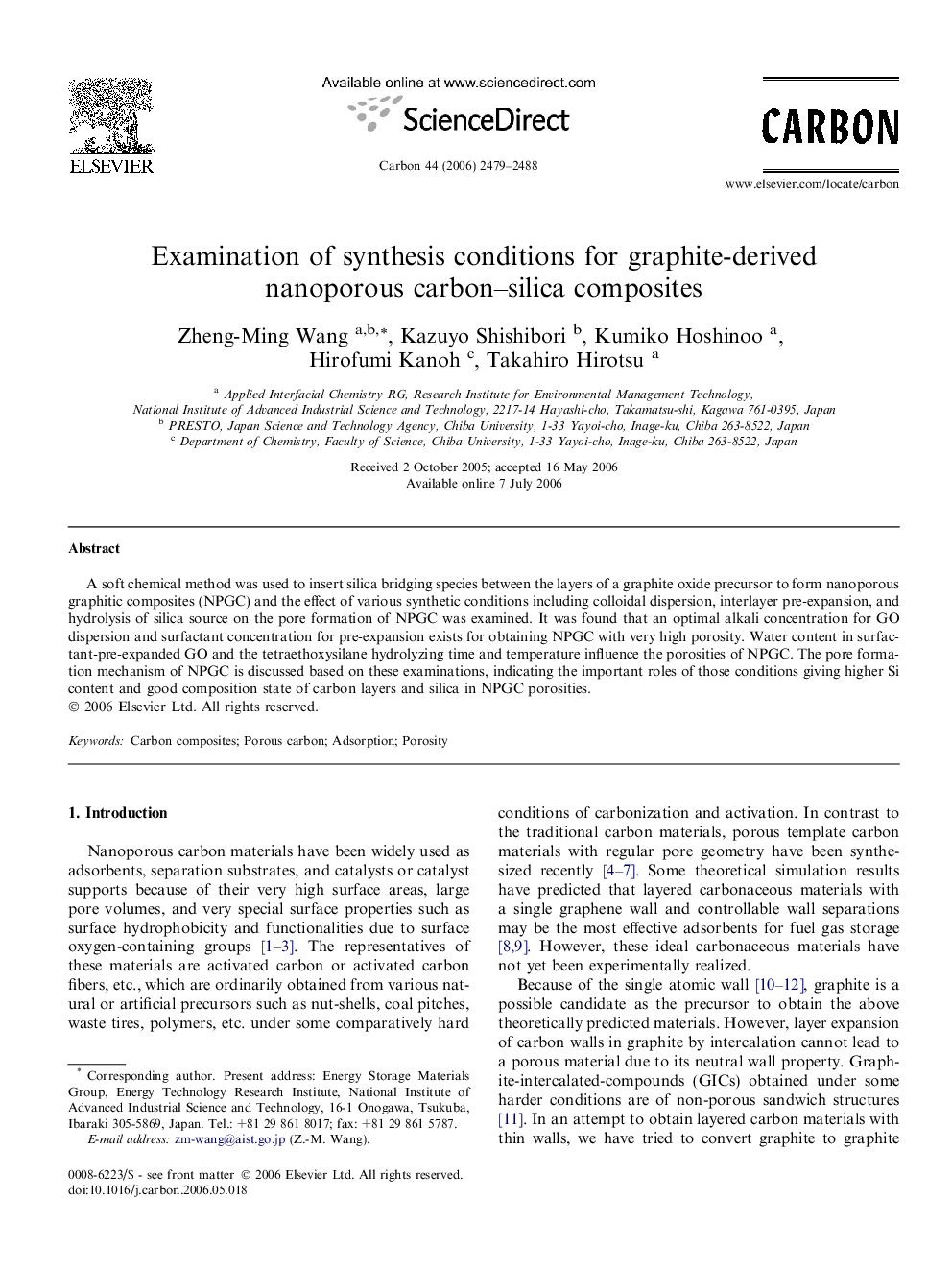| کد مقاله | کد نشریه | سال انتشار | مقاله انگلیسی | نسخه تمام متن |
|---|---|---|---|---|
| 1417820 | 985979 | 2006 | 10 صفحه PDF | دانلود رایگان |

A soft chemical method was used to insert silica bridging species between the layers of a graphite oxide precursor to form nanoporous graphitic composites (NPGC) and the effect of various synthetic conditions including colloidal dispersion, interlayer pre-expansion, and hydrolysis of silica source on the pore formation of NPGC was examined. It was found that an optimal alkali concentration for GO dispersion and surfactant concentration for pre-expansion exists for obtaining NPGC with very high porosity. Water content in surfactant-pre-expanded GO and the tetraethoxysilane hydrolyzing time and temperature influence the porosities of NPGC. The pore formation mechanism of NPGC is discussed based on these examinations, indicating the important roles of those conditions giving higher Si content and good composition state of carbon layers and silica in NPGC porosities.
Journal: Carbon - Volume 44, Issue 12, October 2006, Pages 2479–2488